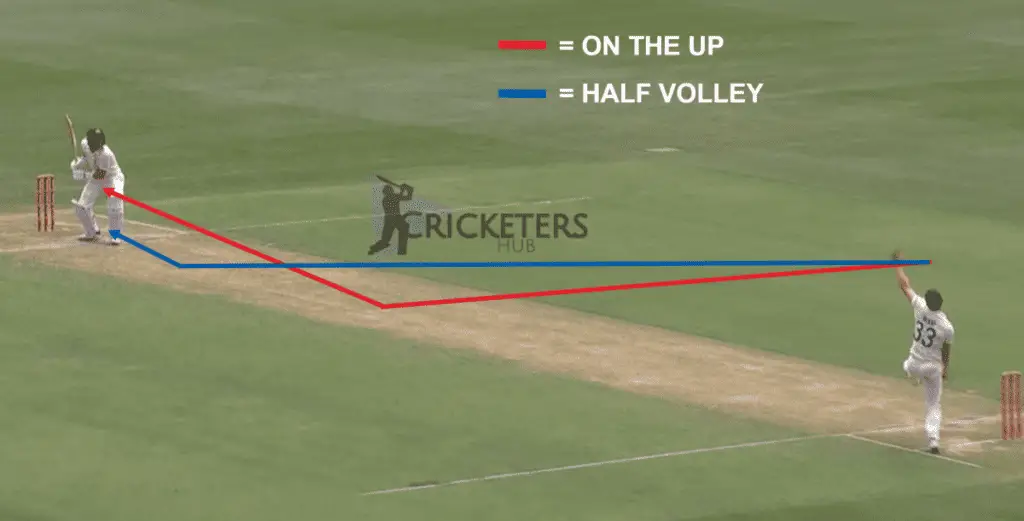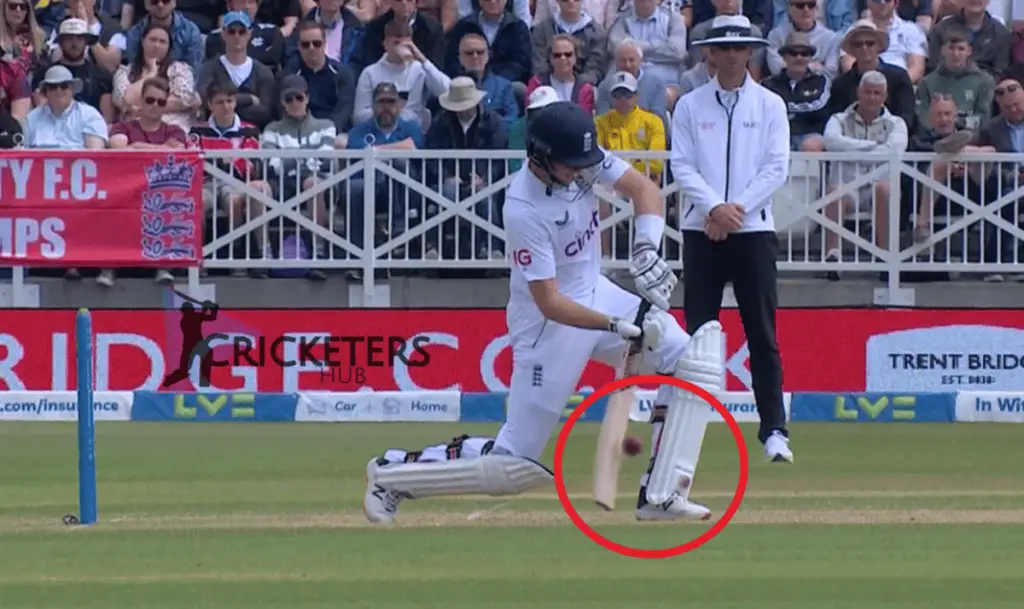When I was watching my first few cricket matches on TV, I remember being overwhelmed by the amount of cricket-based jargon I was hearing on the commentary. I was hearing terms like ‘reverse swing’, ‘deep mid-wicket, ‘leg cutter’ and ‘cover drive’ for the first time – and had absolutely no idea what any of them meant. Nowadays if I hear a term I don’t understand, I just grab my phone and google it to instantly find out what it means. But back in 2005 when I was a 12 year old kid I didn’t have a mobile with access to the internet – so I generally just watched the cricket coverage and tried to figure it out for myself.
One of the other terms that really confused me was when commentators like Geoffrey Boycott and Tony Greig talked about hitting the ball ‘on the up’, or ‘on the rise’. I know from experience that this is a phrase that a lot of other people struggle to understand too, so I thought I’d put together this post to dispel any confusion. If you want to know what hitting the ball on the up means, as well as whether it’s bad or good, make sure you read the entirety of this post!
So, what does playing the ball ‘on the up’ mean in cricket?
This phrase refers to the time when batters play front foot shots against deliveries that bounce a sizable distance away from the bat. Because the ball bounces so far away from the bat, the ball will have risen upwards substantially by the time the batter hits it. Hence, they are hitting the ball as it is ‘on the up’.

The ideal delivery to play a front foot shot against is a half volley, where the ball bounces a short distance in front of the bat. Because the ball bounces so close to the batter, it won’t have risen up much by the time it reaches the bat. This is the opposite of playing the ball on the up! When a batter receives a ball like this, they can easily step forwards on to the front foot and hit the ball whilst maintaining technically correct batting positions. Take the cover drive for example. When a batter receives a half volley just outside the off stump, they can push forward onto the front foot, bend their front knee, get their weight and head over the ball and strike it. Because the ball is so full, they will easily be able to hit it out of the middle of the bat! Take a look at the picture below to see what this looks like.

If the ball were to pitch a little further away from the bat on the same line, the ball may have risen up to around the height of the batter’s knee by the time it reaches them. This means that the batter would have to hit the ball on the up instead. Because the ball has bounced higher than a half volley, they wouldn’t find it as easy to bend their front knee and get their head over the ball, which makes it a lot harder to control the shot. Batters who play the ball on the up will often only end up taking a small step forwards with their front foot, and will instead throw their hands towards the ball. This means that there’s a greater chance of edging the ball as well as hitting it aerially to a fielder.
Why Is It Bad To Play The Ball On The Up?
There are a couple of main reasons why playing the ball on the up in cricket may not be a great idea. We did just briefly cover this above, but I thought they deserved their own section too!
It Can Cause You To Lose The Shape Of Your Shot
This is what we briefly covered above. Playing the ball on the up means you won’t be able to push forward onto the front foot as much, and as a result you won’t be able to get as much of your weight over the ball to keep it on the ground. This causes your hands to do all the work, and playing with your hands far away from your body can lead to a lot of mistakes.

If The Ball Seams Or Swings Late You’re Not In A Position To Smother It
One of the advantages of getting your front foot right out to the pitch of the ball is that you’re giving the ball as little time as possible to seam or swing. Seam movement only occurs when the ball actually makes contact with the pitch, so if you get onto the front foot and hit the ball immediately after it pitches, there won’t have been enough time for the seam movement to cause the ball to deviate significantly from its original line. This means that you can be more confident in the shot you’re playing! However, if you’re playing the ball on the up, the ball is pitching a long way away from your bat. This means that there is plenty of time between the ball bouncing and you making contact with it, and in this time it’s possible for the ball to deviate a long way from its original line. When the ball deviates, there’s a much higher chance of you misjudging the flight path of the ball and playing a false shot. This is why playing the ball on the up is not always a great option!
When Should You Play The Ball On The Up?
So, now we know the dangers of playing the ball on the up, let’s discuss whether there are any times during a match when it becomes a little safer to play in this way.
Playing the ball on the up becomes more acceptable and less risky in the following moments:
- When playing in unhelpful fast bowling conditions – When the pitch is not doing anything to help the bowlers, it’s much less risky to hit the ball on the up. In this scenario a batter can choose to play their shots on the up whilst being pretty confident that the ball isn’t going to seam and deviate once it hits the pitch. This means they’re more likely to hit the ball out of the middle of the bat!
- When the ball is old – When the ball gets older it will lose its shine as well as its hardness. The seam on the ball can also become much less pronounced. All of these things make it less likely to seam or swing! If the ball isn’t moving in the air or off the pitch due to being in poor condition, it’s much safer to hit it on the up.
- When you’re trying to up the scoring rate – There are certain times during games when it’s necessary to play more aggressively than you otherwise would. If you’re trying to score runs quickly in order to declare, or if you’re trying to pile pressure on a tiring bowler, you may want to start playing a few more shots on the up instead of just waiting for the bad ball to come.
Conclusion
I hope this post has given you a good explanation of what it means to play the ball on the up, and the risks that are associated with it. In modern cricket batters tend to play much more aggressively than they used to, so playing the ball on the up regularly is much more acceptable. Take Zak Crawley for instance! He loves playing aggressively and regularly hits the ball on the up through the covers. This looks great at certain times, but it also gets him dismissed cheaply a lot too!
10 or 20 years ago, an aggressive batter like Crawley who hits the ball on the up a lot and averages around 30 would never have spent so long in the English test team, but the current England management are willing to stick with him due to his positivity and his potential upside. So, if you’re a batter who likes to play in this way, the modern game might just reward you for doing so!
